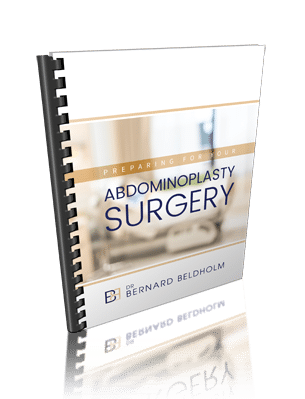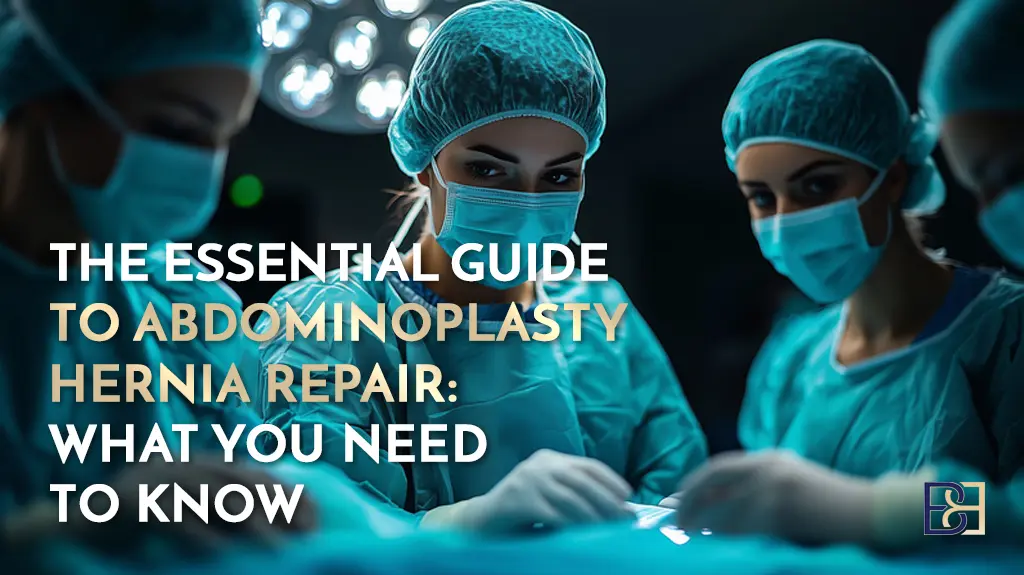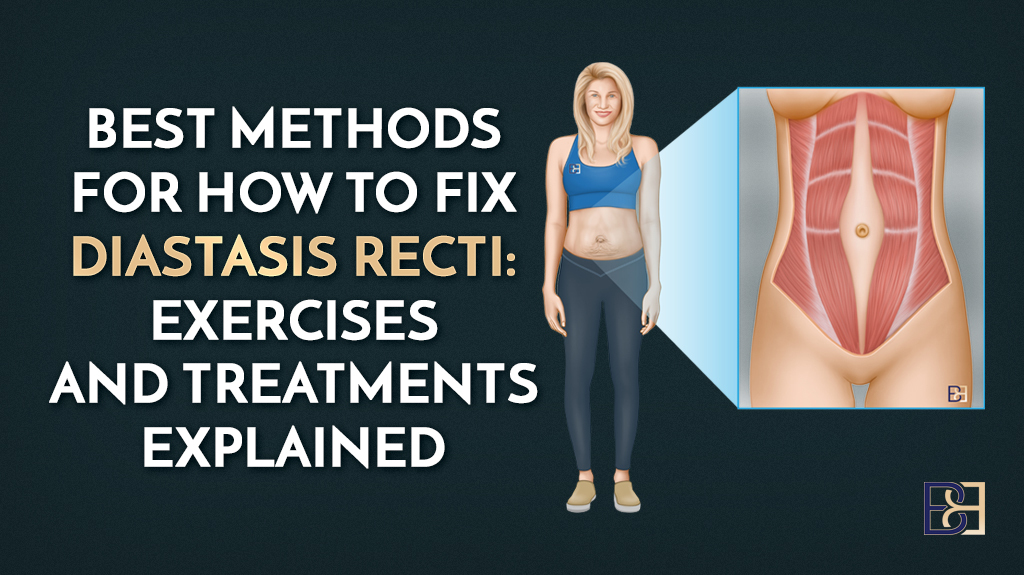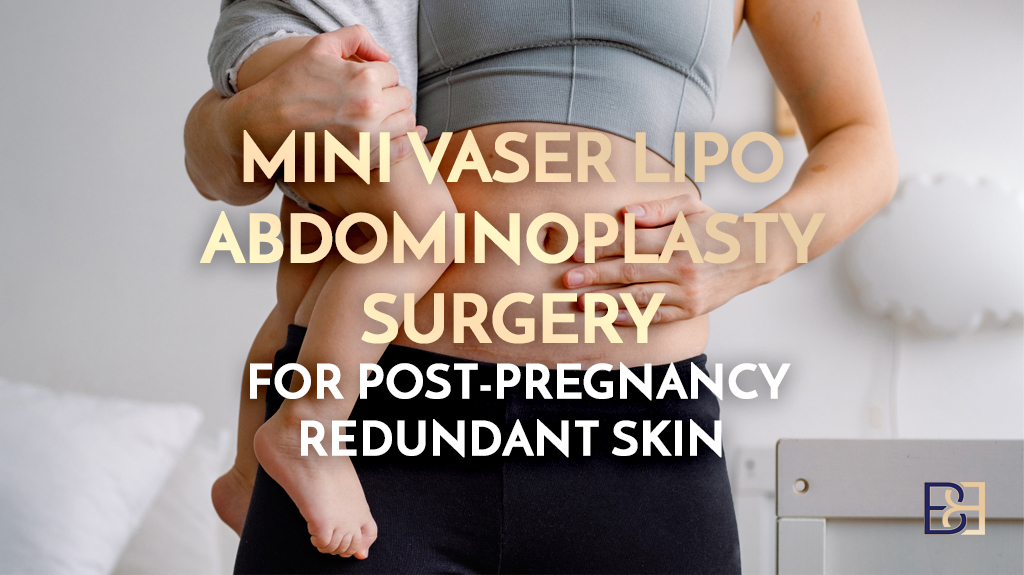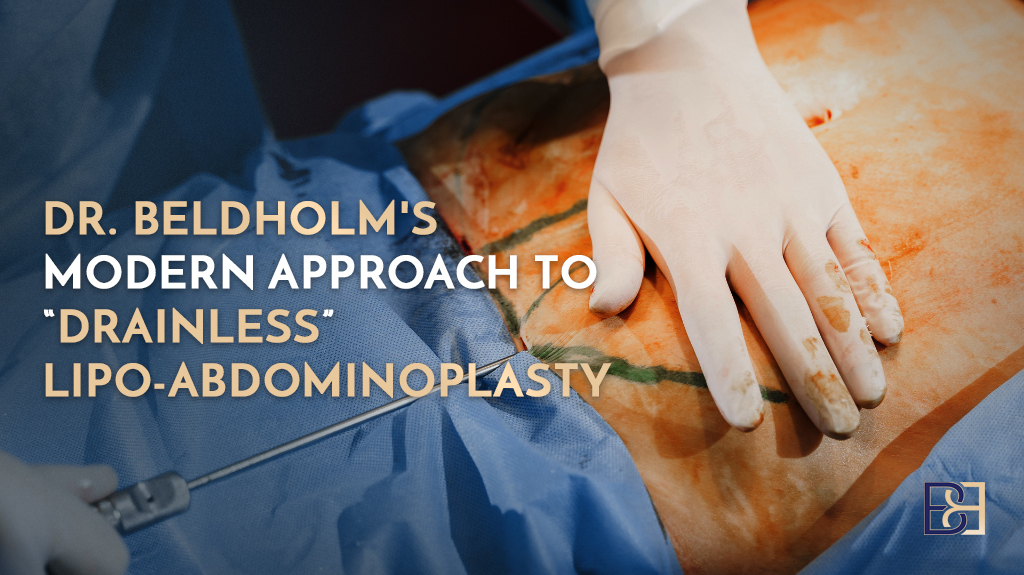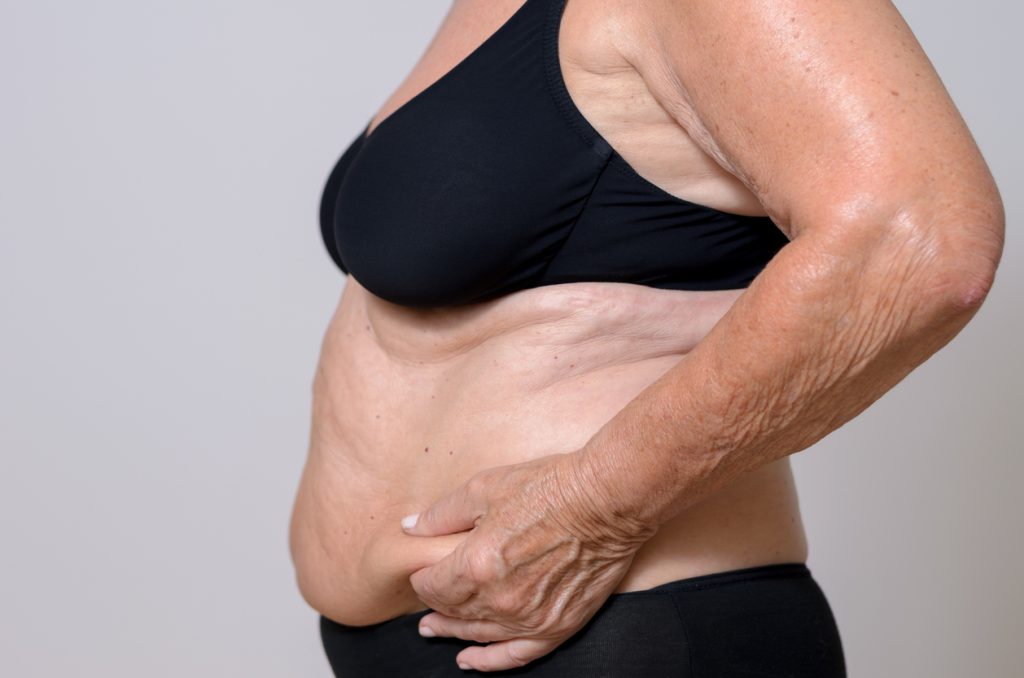
Do you want to fix a bad abdiminoplasty (tummy tuck)? You’re not alone. Abdiminoplasty surgery is supposed to give you a flat, smooth tummy. Though most patients are content with the results of their surgery, that is not always the case. If your first plastic surgeon didn’t deliver the results you were expecting, seeking a new surgeon for revision surgery can correct it.
What is revision abdiminoplasty (tummy tuck) surgery?
Abdiminoplasty (tummy tuck) revision is a surgical procedure that corrects or augments the results of a past surgery. While most patients are content with the surgical outcome of their abdiminoplasty (tummy tuck), some may seek help to correct certain issues. Patients often choose a new surgeon for a revision surgery if they displeased with their first surgery. As a specialist body contouring surgeon, Doctor Bernard Beldholm has helped many patients upgrade the results of their first abdiminoplasty with a revision operation.
Getting it right the first time
In an idealic world, everyone would get a great tummy tuck result. Of course, things don’t always play out that way. That is why some patients come in for a revision tummy tuck.
Revision surgery has some challenges. The main problem is that there will be scar tissue from from the first surgery. Further, if you are seeking revision with a new surgeon, it is hard to be 100% certain how the first surgeon performed the surgeon. That can make revision surgery a bit more challenging. It’s very important to see a qualified surgeon that is experienced in revision abdominoplasty.
Book your appointment online now
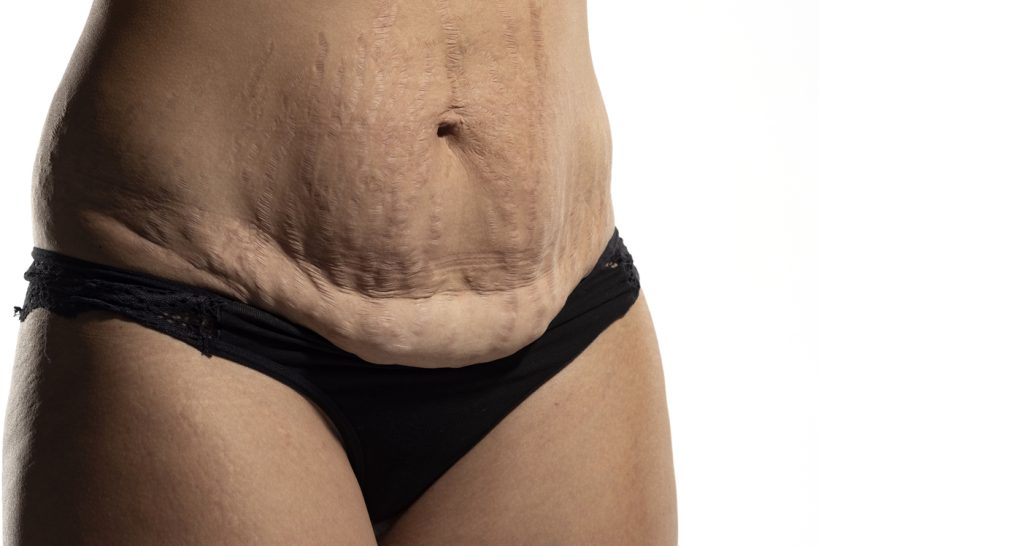
9 reasons to get a revision abdominoplasty
There are the top reasons patients come see Doctor Bernard for abdominoplasty revision.
1. The first abdominoplasty didn’t include suction-assisted lipectomy (liposuction)
An abdominoplasty only removes loose skin, while a tummy tuck with suction-assisted lipectomy (liposuction) eliminates both loose skin and fat. If you had your first surgery without liposuction, you may notice the results aren’t as smooth and attractive as you had hoped.
Many times, patients come in for abdominal liposuction after getting abdominoplasty that didn’t include liposuction. If you need extensive liposuction, however, that won’t give you a great result. Once the fat is gone, you will end up with loose skin on your tummy again. That means you may need a revision tummy tuck with liposuction.
Doctor Bernard uses the latest VASER liposuction technology during his abdominoplasty operations. This cutting-edge fat removal device gives incredibly smooth results to make your abdominal area look toned. To learn about the benefits of VASER liposuction over traditional liposuction, please visit this page.
2. Poor cut/incision
Closing the incision is often the hardest part of the tummy tuck procedure. This is why choosing a specialist body contouring surgeon makes a big difference. Placing the incision correctly is vital to a good result. Inexperienced surgeons may place the incision too high or low. The incision may also have been made too wide, or even crooked.
However, a poor incision can sometimes occur even with a qualified surgeon. Abdiminoplasty (tummy tuck) scar healing and skin quality varies a great deal from patient to patient. Everyone heals differently. It is not always possible to predict how the patient’s skin will heal over time.
Abdiminoplasty (tummy tuck) revision or scar revision surgery can be the solution. Doctor Bernard uses an artistic eye to precisely place the incisions. The excess scar can be cut out and carefully stitched closed again so that it has a more refined appearance. Doctor Bernard can perform the surgery in less than an hour. Some patients do not even require general anesthesia.
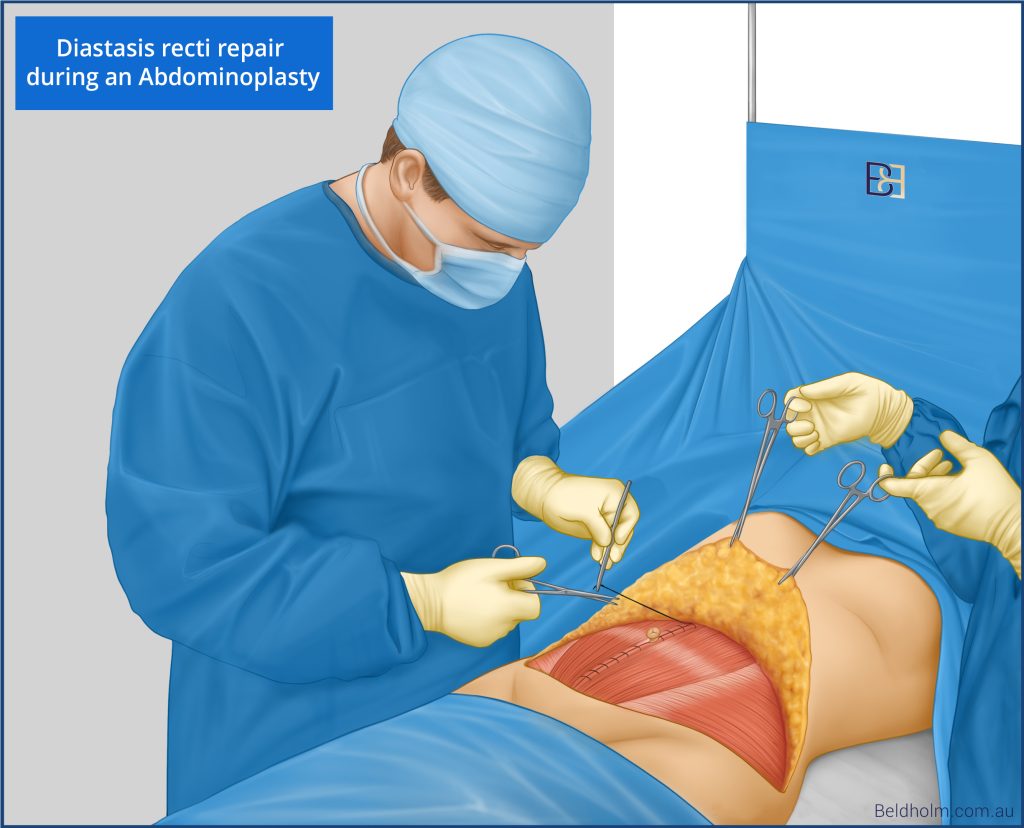
3. Muscle separation (diastasis recti)
Many new mothers and post-weight loss patients suffer from separated abdominal muscles along with loose skin. Also known as diastasis recti, surgical correction may be needed when ab muscle repair exercises fail to remedy the problem. Signs of torn abdominal muscles may include a bulge on the front of the abdomen or abdominal weakness.
A standard abdiminoplasty (tummy tuck) simply removes loose skin on the abdomen. Not all tummy tuck surgeons will repair the abdominal muscles that have stretched due to weight loss or pregnancy. If you got a flat and tight tummy, but still have muscle separation, then a a revision tummy tuck can help correct that. Doctor Bernard’s lipo-abdominoplasty not only removes extra skin folds and refines pockets of fat, it also repairs separated abdominal muscles.
4. Skin flaps don’t line up
When stitching the skin closed after a tummy tuck, the goal is to make the skin flaps line up, a task that can be tricky for an inexperienced surgeon. In Doctor Bernard’s lipo-abdominoplasty, he uses precise surgical techniques to help the skin flaps line up evenly to achieve optimal results.
One method Dr Bernard uses is tilting the operating table slightly before closing the incision. Since the wound is closed with slight tension due to gravity, the incision can be stitched closed nice and taut. It is important to do it this way to make sure the tummy skin has a nice tightness after the tummy tuck.
Using liposuction also greatly reduces the chance of a crooked line where the skin is stitched closed.
If you had abdominoplasty surgery and notice that the skin around the incision isn’t lining up, Doctor Bernard’s revision abdominoplasty can help.
5. Subsequent pregnancy
Women should wait to get an abdominoplasty until after their final pregnancy, if possible However, we all know life doesn’t always go as planned. If you had an abdominoplasty believing you wouldn’t get pregnant again, but later changed your mind, you may end up with loose skin after pregnancy all over again.
It is not dangerous to get pregnant after a tummy tuck, but pregnancy will stretch the skin. A revision abdominoplasty removes loose skin after a subsequent pregnancy.
6. Gaining then losing weight
After an abdominoplasty, it is important to maintain a stable weight because re-gaining then re-losing weight can stretch the skin again. Skin usually does not retract all the way after losing 30-40 kilos or more. Losing a substantial amount of weight results in loose skin on the midsection, thighs, arms and other areas.
The goal of abdominoplasty is to remove loose skin that remains after major weight loss or pregnancy. If you had abdominoplasty before reaching a stable weight, then lose even more weight, you’ll just have more loose skin.
Remember, abdominoplasty is not a substitute for weight loss surgery. The goal of abdominoplasty is to remove loose skin that remains after major weight loss or pregnancy. If you had abdominoplasty before reaching a stable weight, then lose even more weight, you’ll just have more loose skin.
Revision abdominoplasty can get rid of extra skin on the abdomen that occurs after losing more weight.
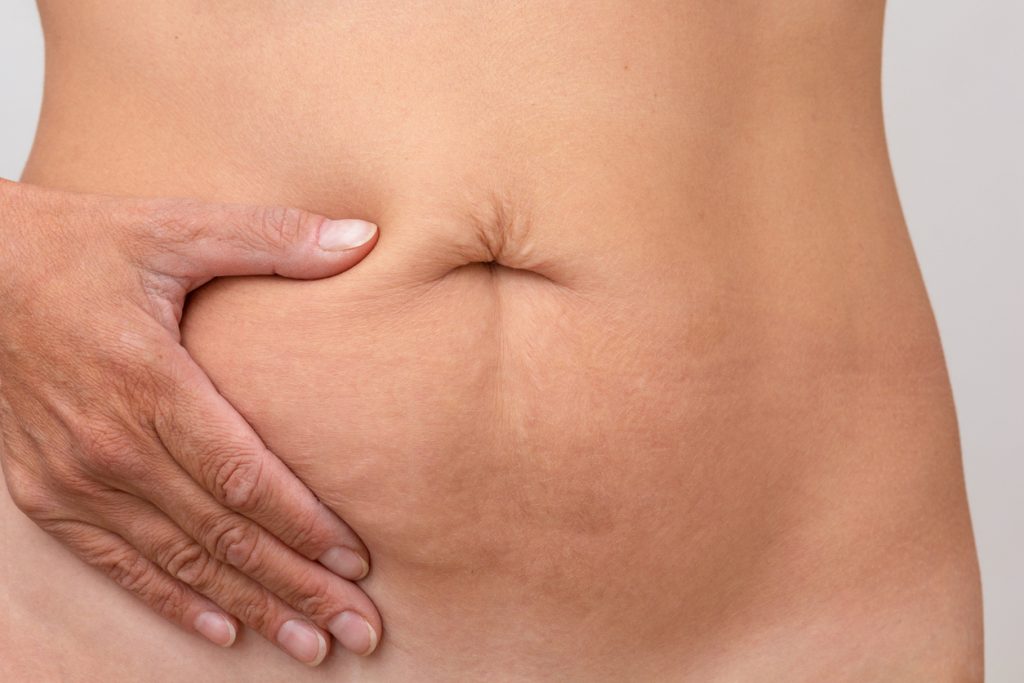
7. Belly button revision
Does your belly button look strange after tummy tuck surgery? This is unfortunately a common problem. Inexperienced surgeons may make the mistake of shaping the belly button too round. This does not look natural. It is one of the top reasons patients come to Doctor Bernard for tummy tuck revision.
The goal of any body contouring surgery is an optimal result. As you can tell from looking at most belly buttons, the navel is normally oval, not round. There’s also usually has a small hood of skffin at the top of the navel. Of course, belly button shape varies from person to person. But having these features makes the belly button looks more natural after tummy tuck surgery. Doctor Bernard can do a belly button revision during the tummy tuck repair surgery for patients that need it.
8. Touching up an old tummy tuck (abdominoplasty)
An abdominoplasty (tummy tuck) permanently removes excess abdominal skin, but it doesn’t stop the natural aging process. As we age, the body produces less elastin—a protein that keeps skin firm and elastic. Over time, this can cause the skin to become thinner, weaker, and looser, even after surgery. If it has been ten years or more since a patient’s abdominoplasty, a revision may be considered to take care of any new skin laxity that has developed with age.
9. Disappointing results from a mini abdominoplasty
We see lots of new mums that dislike that overhanging flap of skin on the lower abdomen after a cesarean birth. A mini tummy tuck is ** for that. It is less invasive and also less costly than a full tummy tuck jjnjrocedure. The recovery time is shorter, too.
It’s no surprise that many women choose the mini tummy tuck for these reasons. Many women just want a subtle augmentation to their post-pregnancy body and can’t deal with prolonged downtime with a newborn at home. They may choose a mini abdominoplasty for these reasons, only to later change their mind.
Down the road, they may wish they had a full abdominoplasty to get rid of even more loose skin. Some women come in for revision surgery a few years after a mini tummy tuck to make their tummy look even better.
A mini abdominoplasty only removes excess skin on the lower abdominal area, not on the upper abdomen like a full abdominoplasty. If you later decide to remove loose skin on the upper tummy, a revision abdominoplasty can accomplish that.
What to expect during revision abdominoplasty surgery
A revision abdominoplasty can tidy up the tummy area and surmount the results of the first surgery. However, there are some key differences. A revision abdominoplasty is a more delicate operation because there is scar tissue and permanent sutures from the first surgery to contend with.
Patients frequently see Doctor Bernard for revision surgery after having a abdominoplasty performed by another surgeon. There is no way to know exactly how the original surgeon performed the surgery until the abdomen is reopened during revision surgery. Revision surgery must be performed slowly and carefully, being mindful of these factors.
Furthermore, if you had a full (or extended) abdominoplasty in the past, the blood supply in the areas above the belly button may be reduced. Therefor, aggressive suction assisted lipectomy (liposuction) or tightening during the revision surgery can be risky. Though suction assisted lipectomy (liposuction) is still possible, it should not be extensive.
A revision abdominoplasty can have a positive impact on the results of your first surgery, but it must be performed with great care by an experienced surgeon.
Conclusion
Patients no longer have to live with abdominoplasty (tummy tuck) results that fall short of their expectations. If you’re dissatisfied with the outcome of a previous abdominoplasty (tummy tuck), revision surgery may offer a second chance at achieving your goals. Whether due to an unexpected pregnancy, weight fluctuations, or the return of loose skin over time, revision abdominoplasty (tummy tuck) can help restore a smoother, more refined contour. When performed by a highly trained body contouring specialist, this procedure has the potential to deliver effective and long-lasting results.

